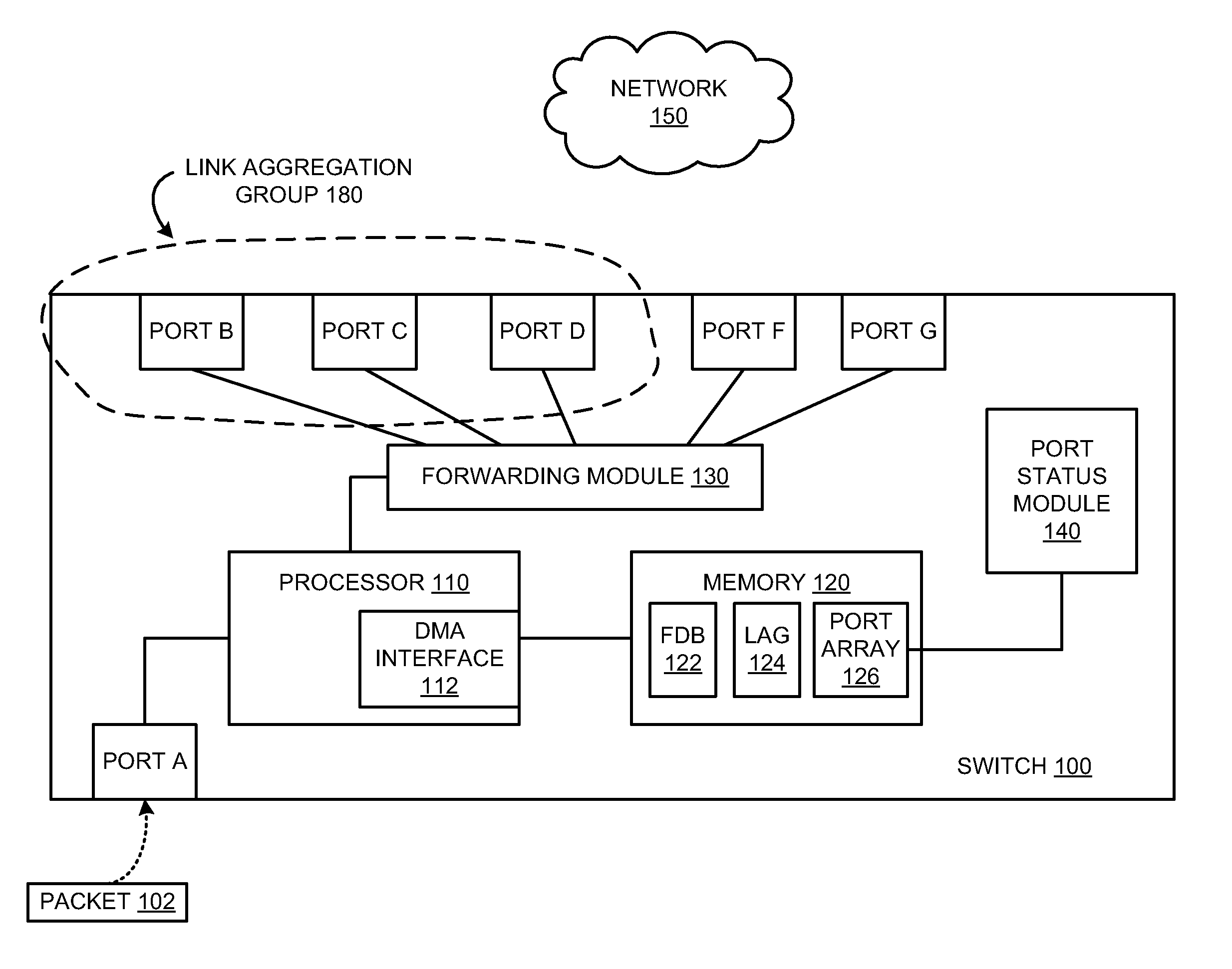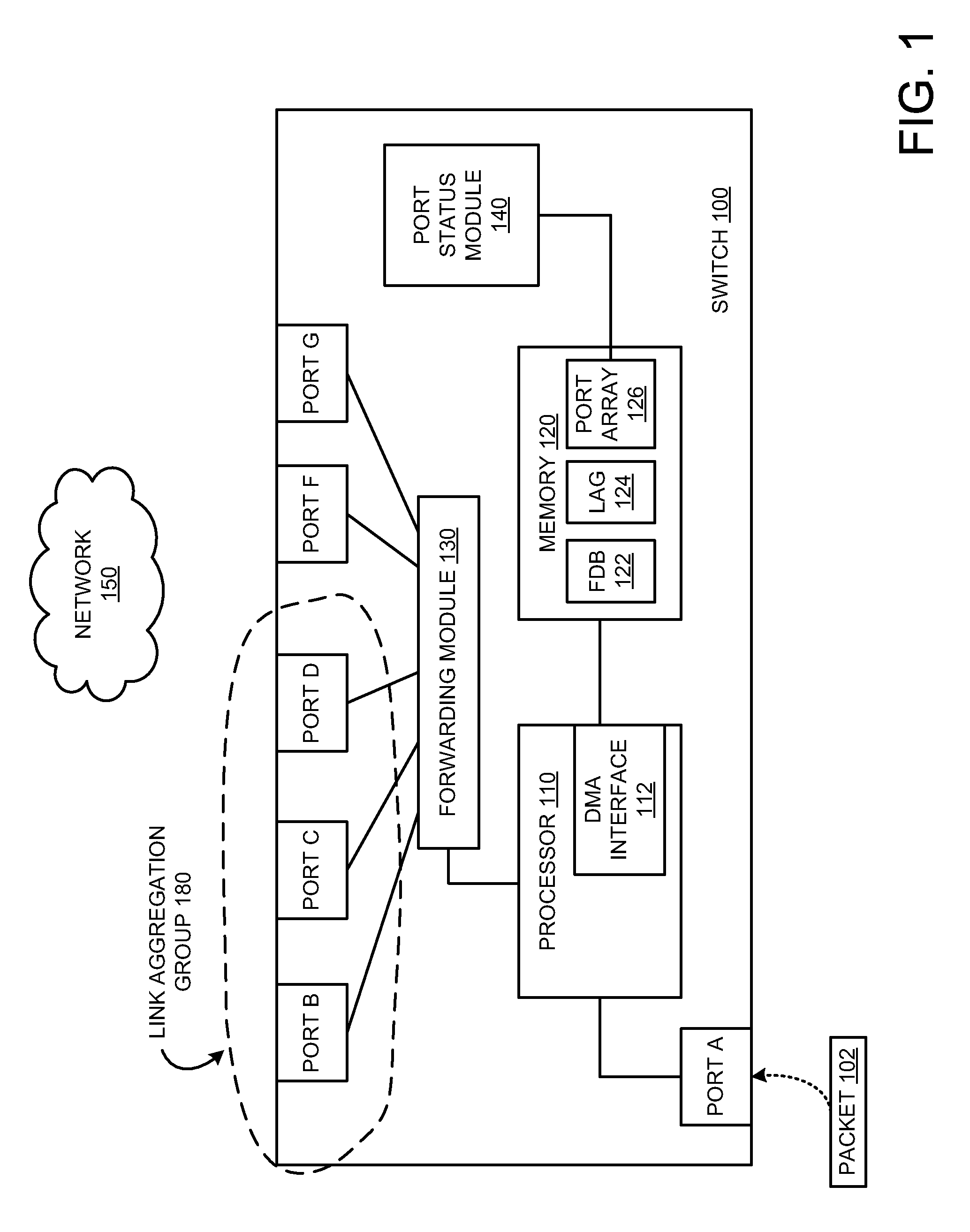Traffic forwarding in a traffic-engineered link aggregation group
a traffic-engineered link and traffic-engineered technology, applied in data switching networks, high-level techniques, frequency-division multiplexes, etc., can solve problems such as link aggregation, tcam lookup solutions, and need to perform content addressable memory (or cam) lookups
- Summary
- Abstract
- Description
- Claims
- Application Information
AI Technical Summary
Benefits of technology
Problems solved by technology
Method used
Image
Examples
Embodiment Construction
[0010]As provided herein, methods, apparatuses, and systems facilitate packet forwarding within a Link Aggregation group. Rather than requiring both a forwarding database lookup and a Link Aggregation port table lookup to determine primary and backup ports for forwarding the packet, embodiments described herein allow a packet to be forwarded, based on just a forwarding database lookup, followed by a search of a Link Aggregation port array, to determine forwarding for a packet.
[0011]FIG. 1 is a block diagram, according to various embodiments. Switch 100 is a network switch having a plurality of ports. Network switch 100 can be any type of device that is used for forwarding, or routing, of packets. In other words, in various embodiments, a network switch could be a Layer 2 bridge, a Layer 3 switch (or router), or any other known network device. As shown, switch 100 includes multiple ports, a processor 110, a memory 120, a forwarding module 130, and a port status module 140.
[0012]In an...
PUM
 Login to View More
Login to View More Abstract
Description
Claims
Application Information
 Login to View More
Login to View More - R&D
- Intellectual Property
- Life Sciences
- Materials
- Tech Scout
- Unparalleled Data Quality
- Higher Quality Content
- 60% Fewer Hallucinations
Browse by: Latest US Patents, China's latest patents, Technical Efficacy Thesaurus, Application Domain, Technology Topic, Popular Technical Reports.
© 2025 PatSnap. All rights reserved.Legal|Privacy policy|Modern Slavery Act Transparency Statement|Sitemap|About US| Contact US: help@patsnap.com



